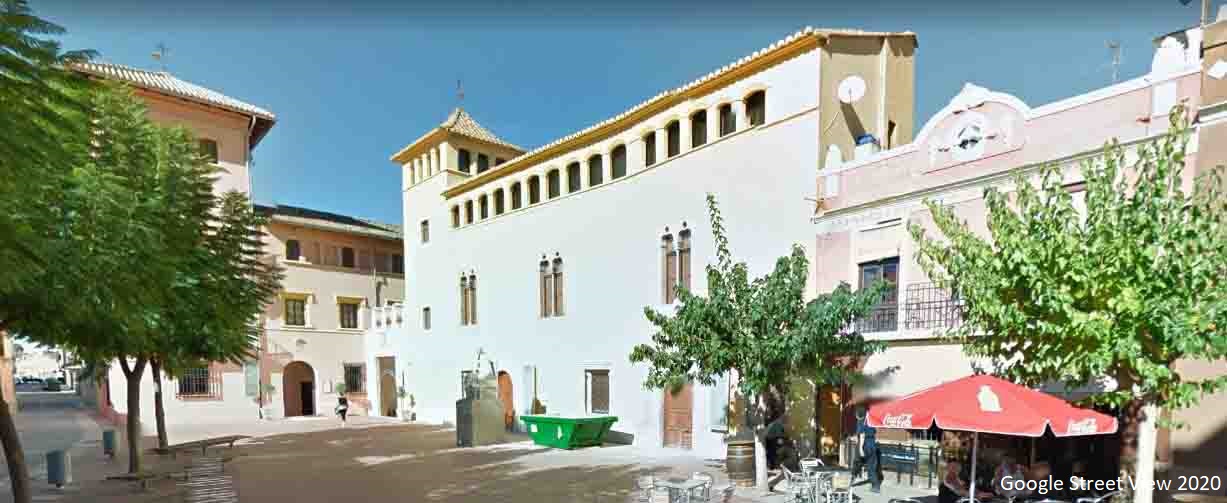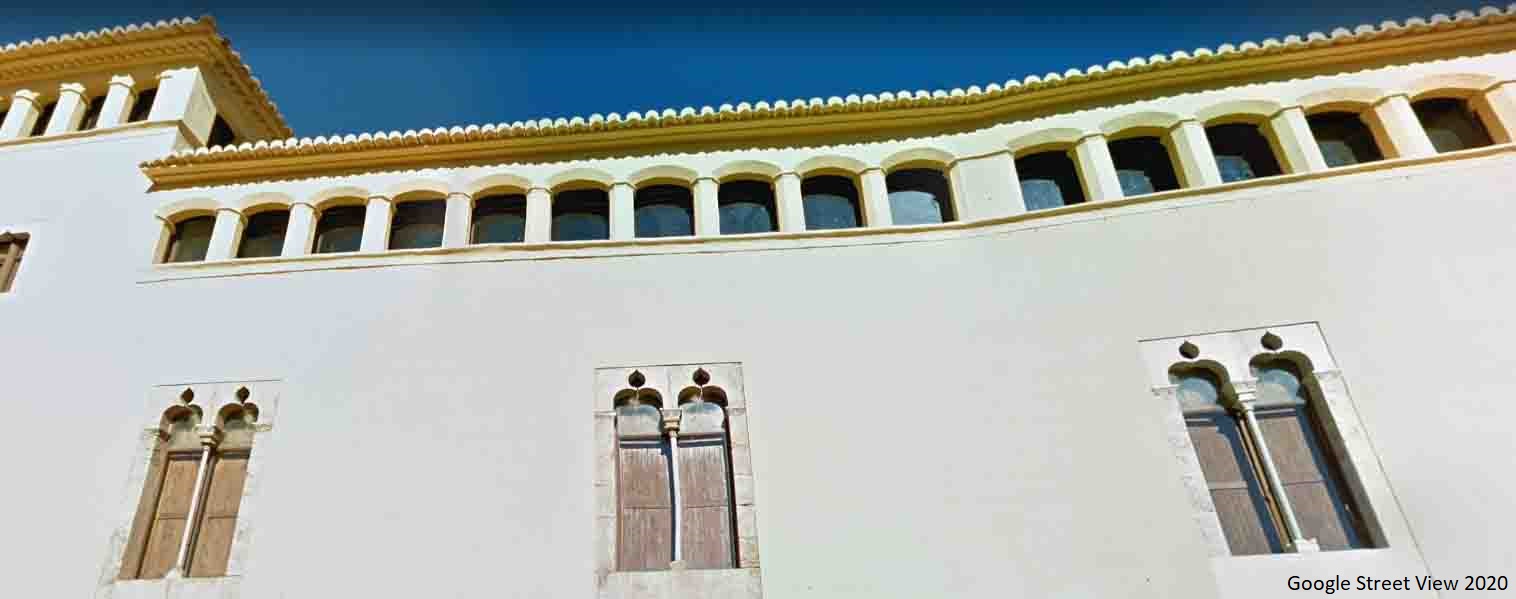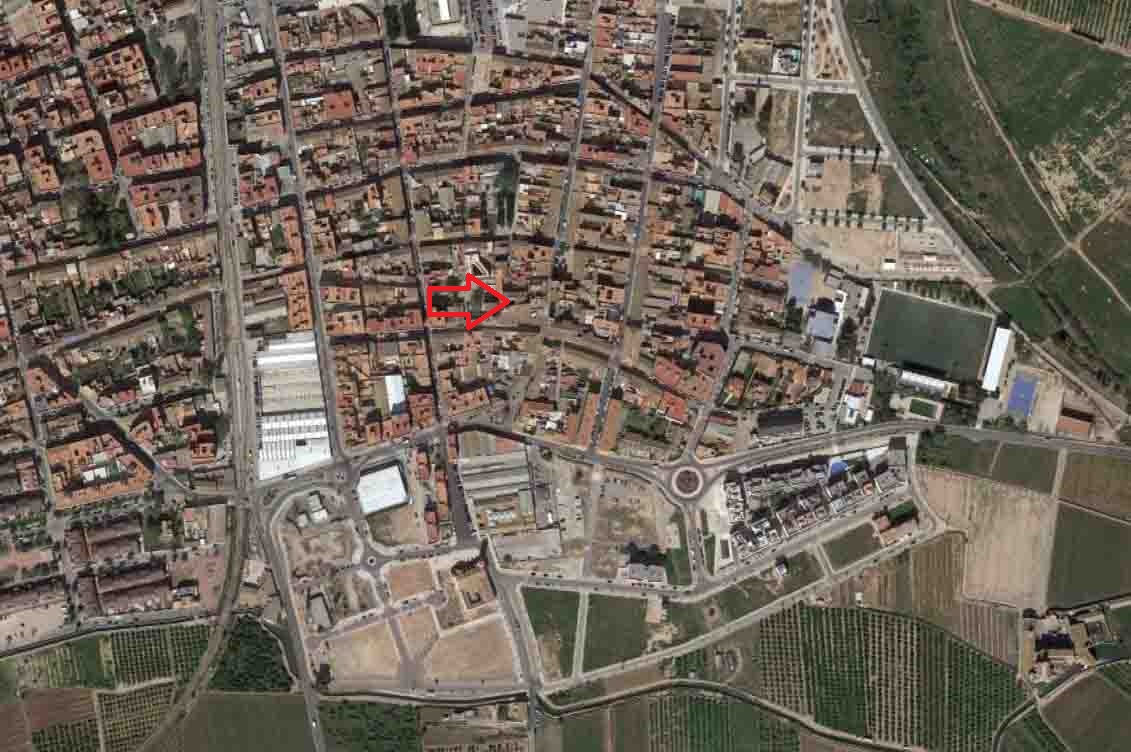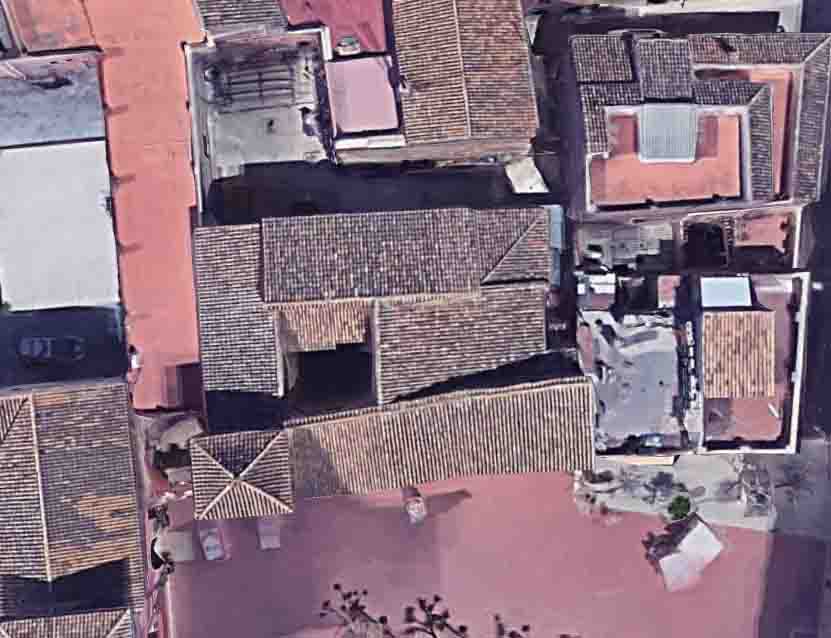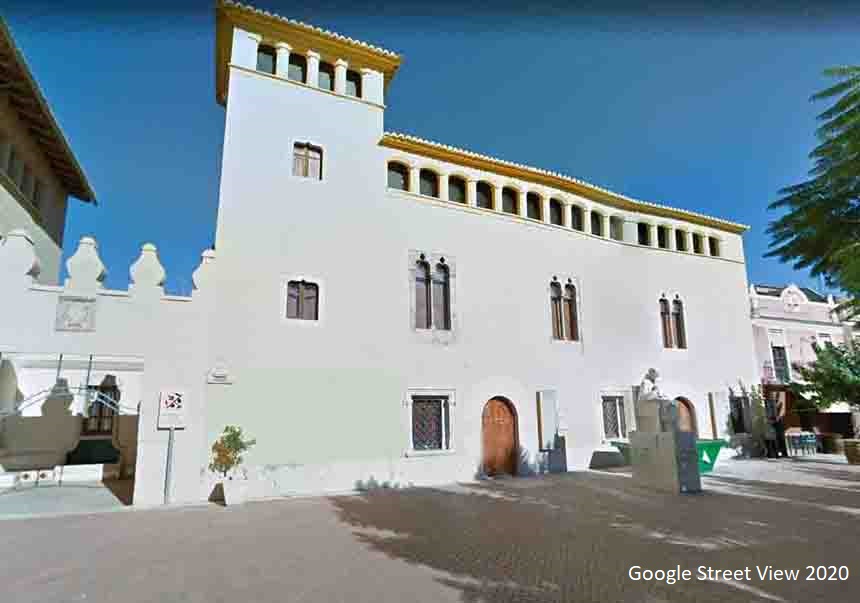
It is located in the square San Juan de Ribera no. 2 of the town.
16th century
According to the catalogues of the PGOU of Alfara (2002) and the General Directorate of Heritage, its origins date back to the 14th century. Even so, its basic architectural structure that has survived to the present day corresponds more to a 16th century palace, with similarities to the palace-house of La Serena-la Sirena located in the same municipality. The nobleman Bartomeu Cruïlles bought the manor of Alfara in 1396, so it is most likely that it was this family that built it. Two centuries later, in 1595, the nobleman Cosme Cruïlles sold the manor of Alfara to the patriarch Juan de Ribera, archbishop of València, and therefore also this palace. Nonetheless, six years later, in 1601, he gave it as an estate to his Royal College of Corpus Christi foundation, which became the owner until the Confiscation of ecclesiastical property in the 1830s and following years. We have so far found no references to its later ownership, but it was abandoned during the 20th century. In the 1980s it was restored with the intervention of the Provincial Council of València and became a building with administrative and cultural functions for the Alfara Town Council.
It is located in the central square of the town of Alfara, along with the church and the contemporary town hall, in a totally urban environment since its origins. According to the catalogues of the PGOU of Alfara (2002) and the General Directorate of Heritage, it is a typical stately building from the Renaissance period, with a fortified appearance due to the tower on one corner, but with a marked residential character. It has three storeys with a square tower at one end of the façade and its roof is hipped. The main façade has a semicircular ashlar doorway in the ground floor flanked by two rectangular windows. The first floor has three large biforas decorated with ogive archs decoration. By contrast, the first floor has a row of windows in the form of a gallery, which was really popular in the late 15th and 16th centuries. The interior is profoundly transformed as a result of neglect and, then, the necessary restoration at the end of the 20th century. Luckily, some ancient elements have been preserved, such as the ceiling or coffer decoration and remains of mural paintings.
Asset of Cultural Interest-Monument (BIC), according to the decree of 20th June 2001 (Ministry annotation: R-Y-51-0010657).
- Pla General d’Ordenació Urbana (PGOU) d’Alfara del Patriarca. Catálogo de Bienes y Espacios Protegidos (2002). Inventario de Bienes, fitxa: I-2: Palacio o Castell
- Inventari General de Patrimoni Cultural Valencià. Conselleria de Cultura, Generalitat Valenciana. Secció 1 A-Béns d’Interés Cultural, fitxa: Castillo de la Señoría
- EspaiCarraixet: El castell de la senyoria Alfara del Patriarca
- Aparicio Martín, Cristina: Propuesta de Catálogo de edificios protegidos de una población mediana/pequeña: Alfara del Patriarca, TFG de la Universidad Politécnica de Valencia, 2016
Photos: Google Street View, Google Earth



